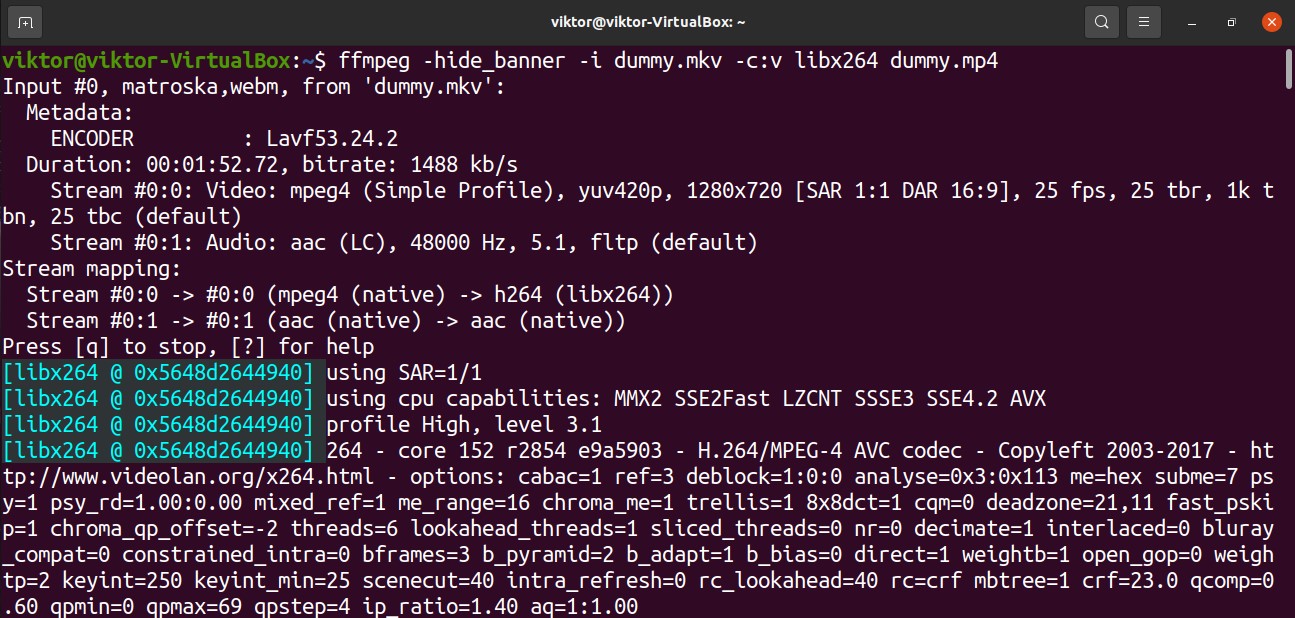

- #UBUNTU FFMPEG 16.04 INSTALL#
- #UBUNTU FFMPEG 16.04 UPDATE#
- #UBUNTU FFMPEG 16.04 PASSWORD#
- #UBUNTU FFMPEG 16.04 DOWNLOAD#


#UBUNTU FFMPEG 16.04 PASSWORD#
It will return “OK” as response if the password is correct. Go ahead and authenticate using the following command.ġ27.0.0.1:6379> auth YOUR_DESIRED_REDIS_PASSWORD It should not work and you will see the the error message stating “NOAUTH Authentication required.”. Now, try to create and store a key-value pair in Redis: Once again, Execute the following command to spin up the Redis server’s command line interface. We can test if Redis allows us to create and store key-value pairs without authentication. Mainly, the memory limit for Redis and password required for authentication. There are few things that we have changed in our configuration. If you still want to test it before using it on any application in production environment, continue following the article. So, our Redis Server Installation and configuration is done and the Redis server is ready to use. To restart the Redis server, execute the following command.Īnd then check the status of the Redis service by executing the command given below.
#UBUNTU FFMPEG 16.04 UPDATE#
Note that the configuration will update only after restarting or reloading the service. To set the password, Press CTRL+W and type “# requirepass” and hit Enter key to navigate to the line.Īfter editing the line, Press CTRL+X and then type Y and then hit the Enter key to save the configuration. Now, we also have to set the password for Redis server. You can replace “256mb” with any number you want based on the resources available on your server. Once you find the line containing following content: Press CTRL+W to enable search interface and type “# maxmemory” and then hit the Enter key to find the line containing “# maxmemory”. Now, you will see a redis configuration file with lots of directives and information. To edit the configuration file using nano, execute the following command in terminal. Redis configuration file is located at “/etc/redis/nf”. The next thing we have to do is to configure Memory usage limit and password in Redis configuration file. To exit, execute “exit” command in the Redis server’s command line interface. If you get the message, Redis server is successfully installed and running on the server. To test if Redis is working correctly or not, Execute the following command. If Redis server is installed successfully, the redis-cli command will open a command line interface for Redis. Once the Redis server is installed on your machine, execute the following command to check if Redis is working properly or not.
#UBUNTU FFMPEG 16.04 INSTALL#
The -y flag we used is to avoid getting a confirmation message to install Redis server. It will take few seconds to install Redis server on your Ubuntu 16.04 machine. To install Redis server, execute the following command in terminal.
#UBUNTU FFMPEG 16.04 DOWNLOAD#
It means, we don’t have to download the source and then compile it in order to install Redis. It’s good that we can now install Redis directly. If you have a Server running on Ubuntu 16.04 as well as root access on it, you are good to go.


 0 kommentar(er)
0 kommentar(er)
